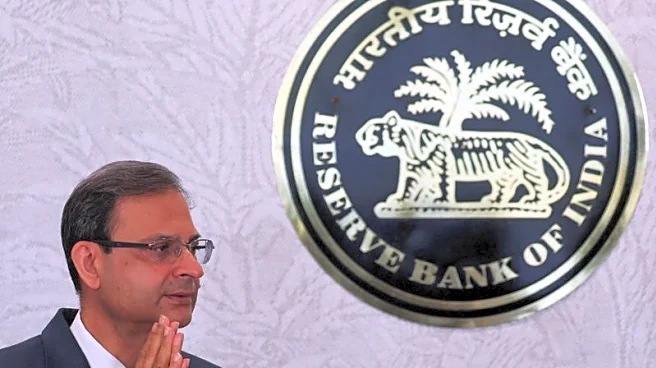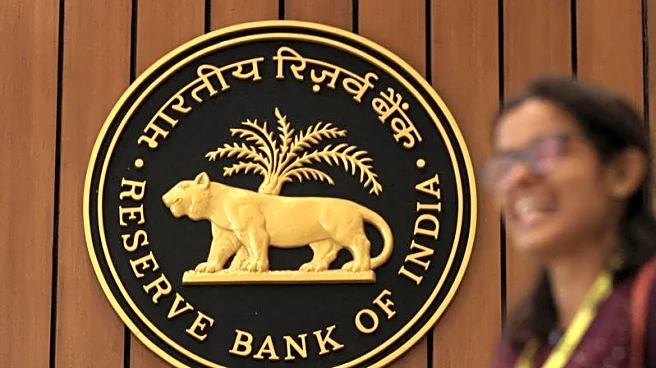What's Happening?
The Reserve Bank of India (RBI) has decided to keep its policy rate unchanged at 5.5%, aligning with economists' expectations. This decision comes as inflation has moderated significantly, although growth may decelerate due to global trade uncertainties. The RBI's previous rate cuts are still filtering through the economy, and the central bank is cautious about further cuts amid external challenges, including U.S. tariffs on Indian imports.
Why It's Important?
The RBI's decision to hold rates steady reflects a cautious approach to managing inflation and growth amid global trade uncertainties. The U.S. tariffs on Indian imports pose significant challenges to sectors like textiles and jewelry, potentially impacting employment. The government's reduction in goods and services tax aims to spur domestic demand, highlighting efforts to mitigate tariff impacts. The RBI's focus on stability is crucial for maintaining economic resilience.
What's Next?
The RBI will continue to monitor inflation and growth trends, with potential rate cuts depending on economic conditions. The government's efforts to boost domestic demand through tax reductions will be crucial in offsetting tariff impacts. The RBI's cautious approach suggests a focus on long-term economic stability amid global uncertainties.
Beyond the Headlines
The RBI's decision underscores the complexities of managing monetary policy amid global trade tensions. The impact of U.S. tariffs highlights the interconnectedness of global economies and the need for strategic domestic policies. The government's tax reductions reflect efforts to balance external challenges with domestic growth priorities.











